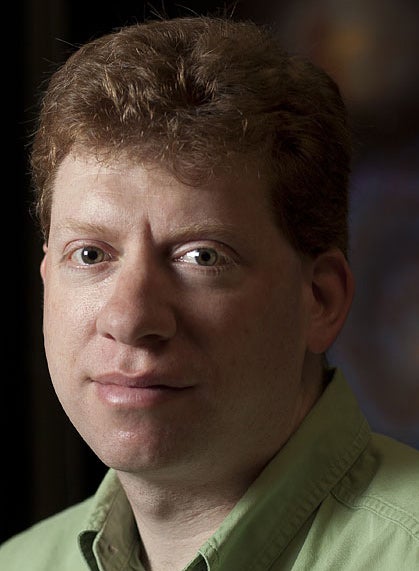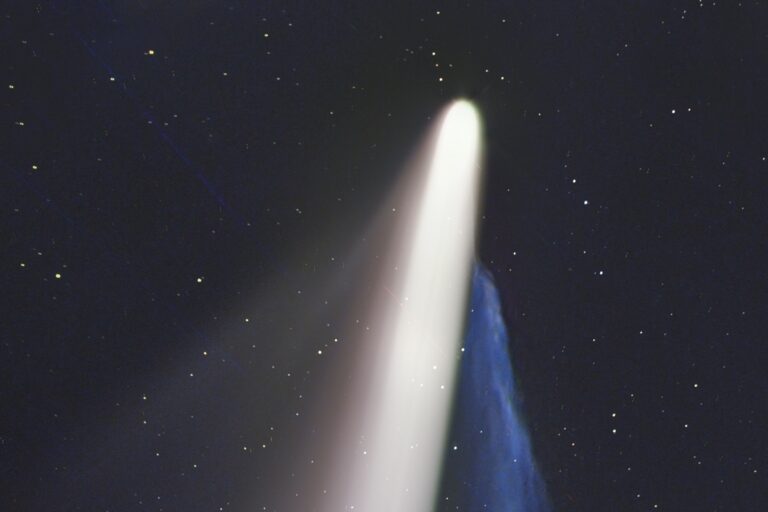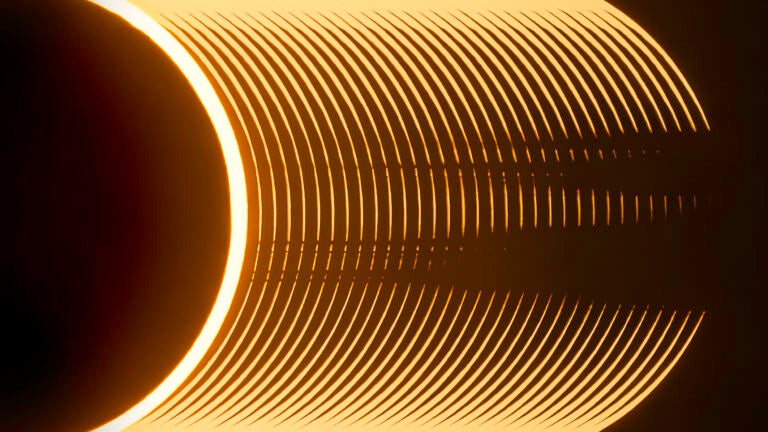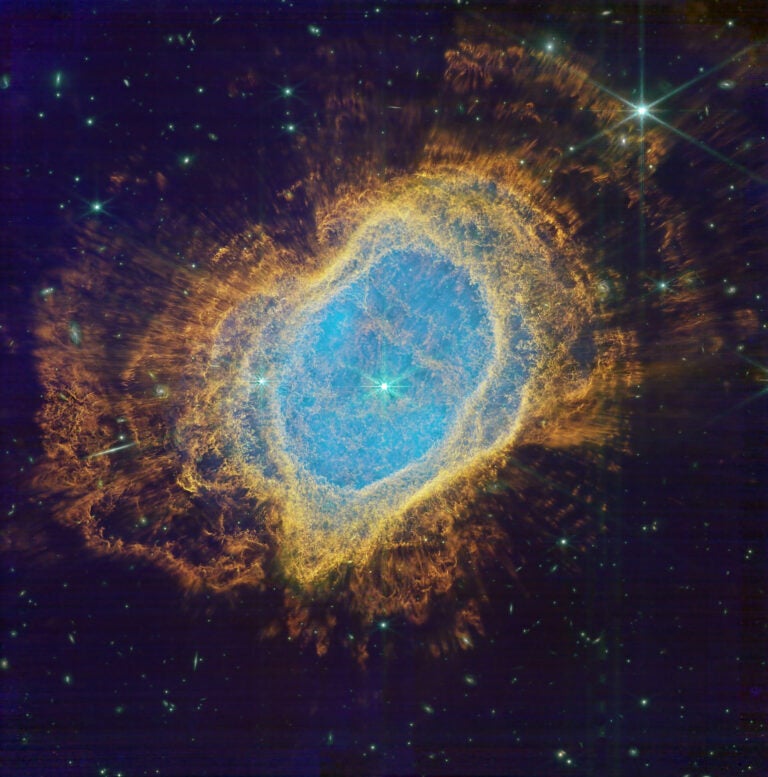Image #1 shows an inverted, high-contrast image of NGC 2903 (a beautiful galaxy in Leo) with a band of light stretching across the field. I chose to display an inverted version to make certain the light comes across in print. But even normally displayed on a monitor, the glow is apparent and unwelcome.
To deal with this, I developed a simple five-step process using Photoshop that will let you fix any similar glow superimposed on the darker background sky.
Step 1: Create a duplicate layer. On the upper layer, select the area that needs to be worked on with a “Lasso” tool. I used the “Polygonal Lasso” tool to quickly select the region. Feathering the selection is not necessary. Remember this only works for glows against a dark sky, so in this case I did these steps for each side of the galaxy.
Step 3: With your selection still present, press the “Add Layer Mask” button at the bottom of the “Layers” palette. Remember that selections and masks are interchangeable. If you accidently removed your selection, you can “Reselect” (“Select” menu) to bring it back and then create the mask. After you create your mask, the selection will disappear, and the mask, with the selected region being white (fully visible), will be in effect.
Step 5: Bring the opacity of the upper layer back to 100 percent, and check your work. Occasionally, some fine adjustments to the mask where you clicked are necessary to blend the new sky with the objects you are showing. Once complete (and after you flatten the layers), you should have your original background stars and galaxies with a sky created from the “Content-Aware” algorithm.
This treatment is great for fixing errors like dust doughnuts, amplifier glow in the corner of some chips, and even halos around bright stars.













